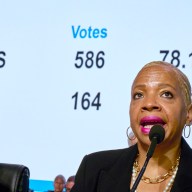Whether taking summer courses or researching programs for September, students preparing for postsecondary education should consider how they’re going to pay for it beyond simply getting a part-time job.
One of the most popular options, of course, is OSAP. The Ontario Student Assistance Program provides both loans, which need to be repaid, and grants, which don’t.
“There’s grants for low-income families, middle-income families, students with dependents, and students with permanent disabilities,” says Hoslee Sahid, manager of financial aid at Humber College.
Another option is entrance scholarships. These are assigned based on high school grades, and awarded “when students are accepted into the program and their grades are verified,” Sahid says. Usually, students are automatically notified when they’re eligible.
Once students have taken some classes they can apply for other types of funding. “For example in November we’ve got the Ontario Student Opportunity Trust Fund Bursary,” Sahid says.
“Students have to complete an application and provide a letter explaining their financial situation.”
There are many private scholarships available from private donors.
“We have the W. Garfield Weston Scholarship, funded by the Garfield Weston Foundation,” Sahid says.
“Three students from each institution are nominated by the school and then the foundation selects the recipients.”
OSAP itself has the “Student Access Guarantee,” Sahid says, “where if the student has a tuition fee over $4,500 per academic year, or books and supplies that cost more than $1000, they could be eligible for anywhere from $100 to $3,000 in bursaries.”
Hoslee says it’s difficult to declare an income cut-off for OSAP grants or loans, because the program examines the number of members in the family.
To qualify for grants, a single independent student must earn less than $22,000; a family of two must earn less than $27,000; a family of three, $34,000; a family of four, $41,000; a family of five, $46,000.
“But I’ve seen students get funding where there’s two siblings, mum and dad, and the income is in the 90s,” Hoslee says.
“They wouldn’t get grants, but they would get a loan.”
For a list of private scholarships, Sahid recommends studentawards.com.
















